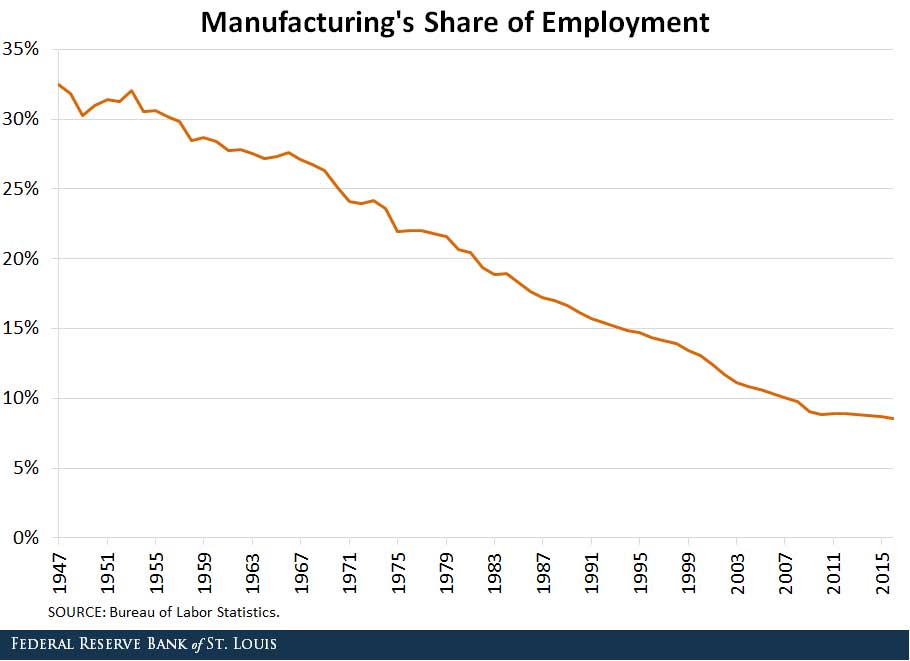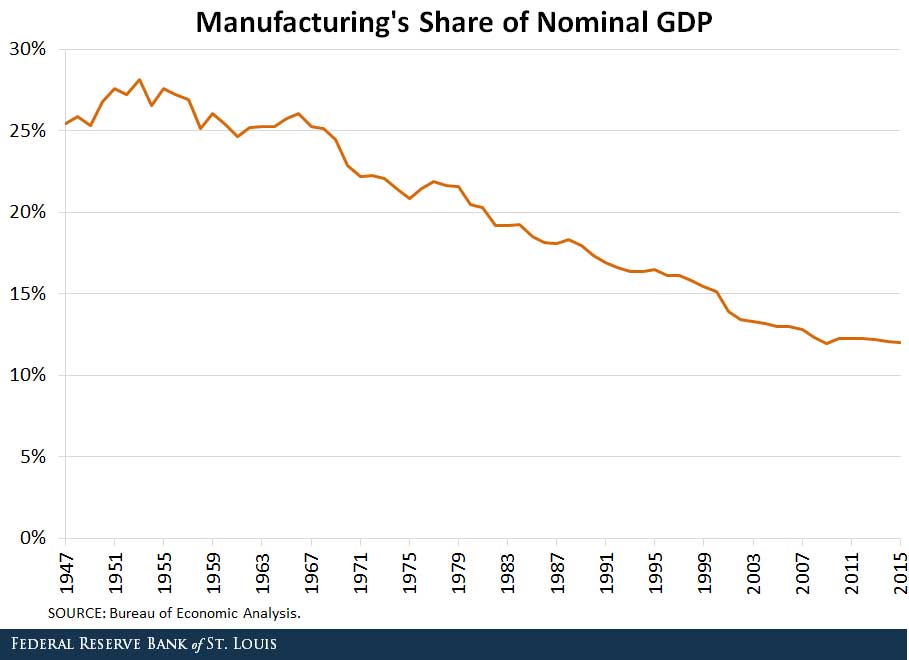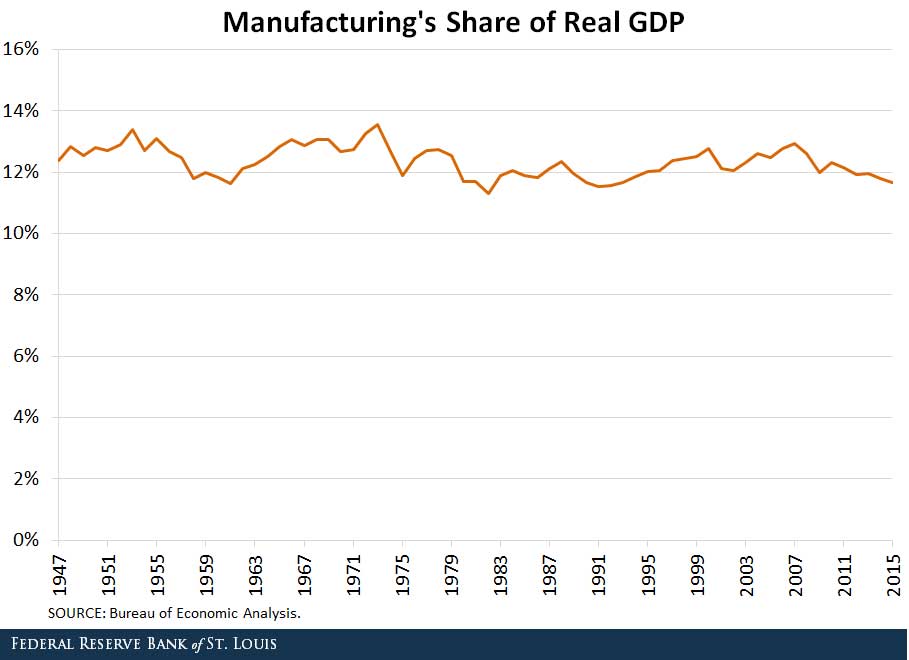Is U.S. Manufacturing Really Declining?
A popular narrative over the past decade has been U.S. manufacturing's precipitous decline. But has manufacturing really become an afterthought in the U.S. economy?
At first glance, the numbers seem to paint a bleak picture for the health of the manufacturing sector. After holding fairly steady through the 1990s, the number of manufacturing jobs in the U.S. dropped from over 17 million in 2000 to just over 12 million in 2015.
The employment share of manufacturing has been declining even longer than that. About 32 percent of workers held manufacturing jobs in 1953, but that share was down to just 8.7 percent in 2015, as seen in the figure below.

Also, manufacturing's share of nominal gross domestic product (GDP) has dropped from 28.1 percent in 1953 to just 12 percent in 2015, as seen in the next figure.

A Greatly Exaggerated Decline?
However, these numbers exaggerate manufacturing's decline. To see why, we need to measure the manufacturing sector's share of real GDP.
The total value of goods produced is equal to the price multiplied by the quantity of goods produced. Removing the price effects from nominal GDP gives us real GDP, so changes in real GDP are the result of changes in the quantity produced. Thus, we can measure how the manufacturing sector’s output has changed over time.
Manufacturing's share of real GDP has been fairly constant since the 1940s, ranging from 11.3 percent to 13.6 percent. It sat at 11.7 percent in 2015.

Thus, in real terms, growth in manufacturing has kept up with growth in the rest of the economy over the past 70 years.
Why the Differences?
The decline in manufacturing's share of nominal GDP over time thus must be because of changes in prices. Since 1947, the price level for the overall economy has grown 3.2 percent per year on average, while prices for manufacturing have grown just 2.2 percent per year.
This implies that nominal GDP for the entire economy has outgrown manufacturing GDP largely because the overall price level has increased faster than the manufacturing price level, and not because the manufacturing sector has produced less relative to the rest of the economy.
This quick inspection of the data indicates that manufacturing in the U.S. has not suffered a significant decline. Rather, manufacturing's roughly constant share of real GDP and declining employment share indicate an increase in productivity of the manufacturing sector relative to the overall economy. This is likely because of automation.
With advanced tools such as robotics to handle tasks that were previously completed by employees, the average employee is able to produce more now than in years past. Thus, firms don't need to hire as many workers to produce the same amount of output.
Additional Resources
- On the Economy: Which States Account for Our Trade Deficit with Mexico?
- On the Economy: A Stronger Dollar and the Profitability of U.S. Firms
- On the Economy: Why Does Economic Growth Keep Slowing Down?
Citation
YiLi Chien and Paul Morris, ldquoIs U.S. Manufacturing Really Declining?,rdquo St. Louis Fed On the Economy, April 11, 2017.
This blog offers commentary, analysis and data from our economists and experts. Views expressed are not necessarily those of the St. Louis Fed or Federal Reserve System.
Email Us
All other blog-related questions



